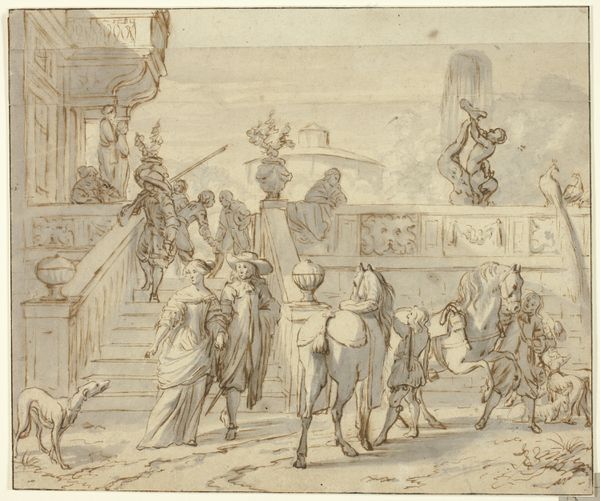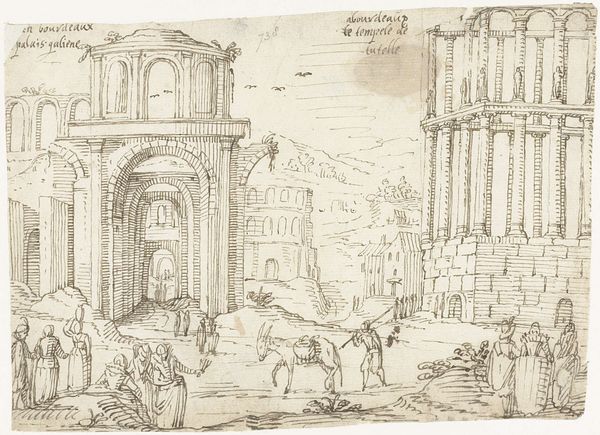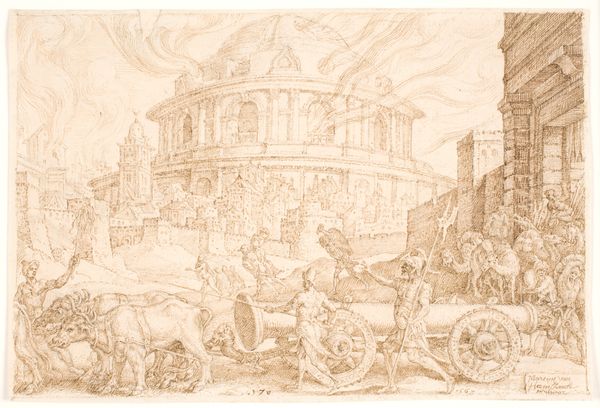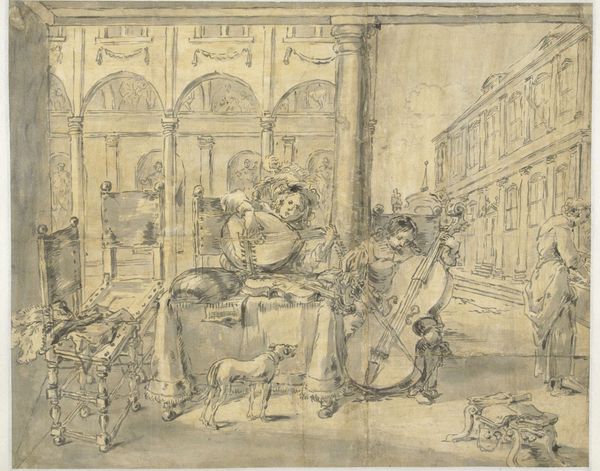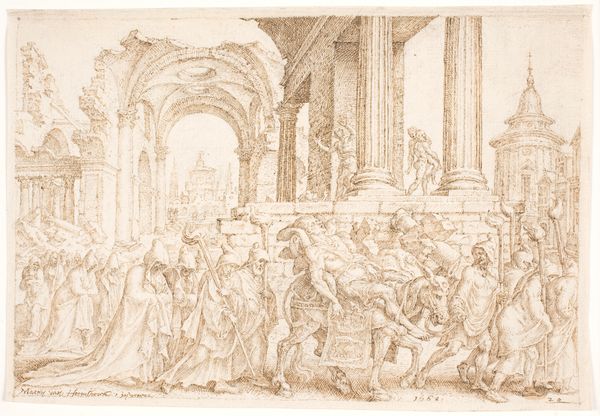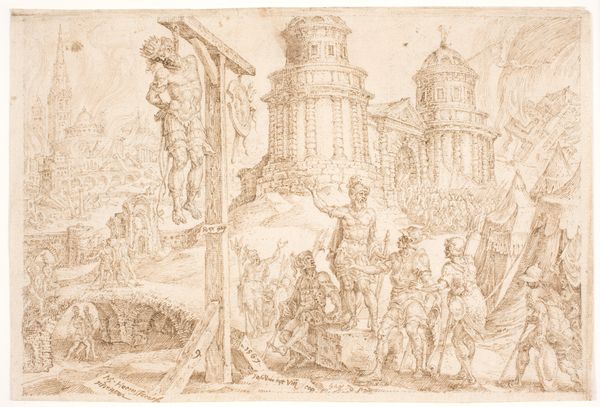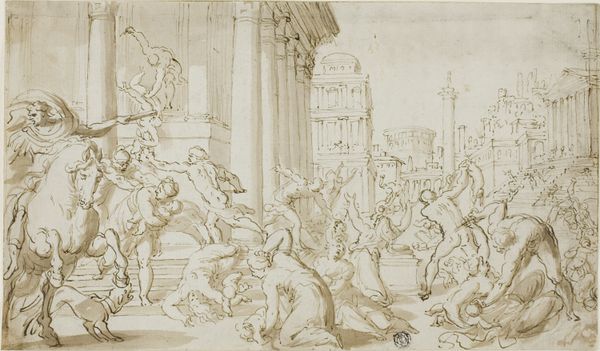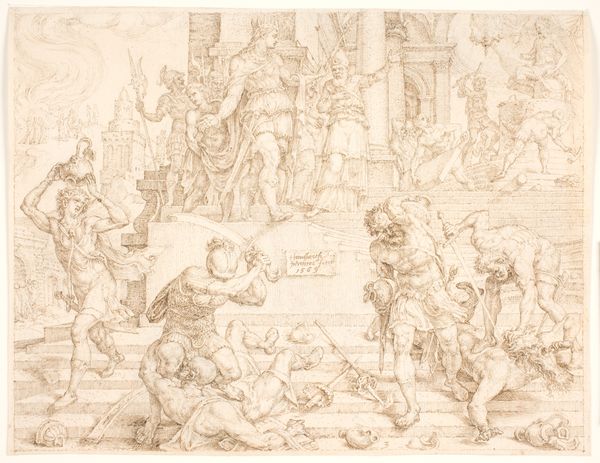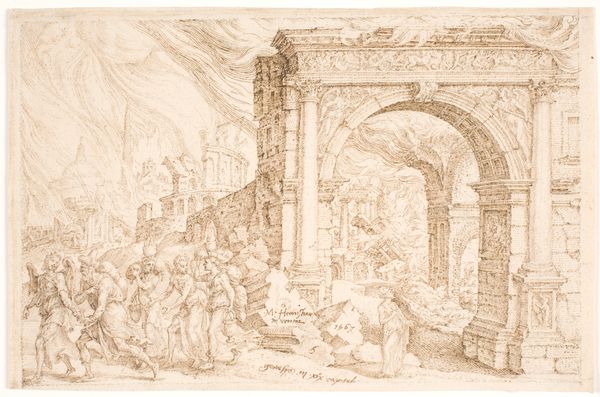
drawing, etching, ink, architecture
#
drawing
#
pen sketch
#
etching
#
etching
#
mannerism
#
11_renaissance
#
ink
#
botanical drawing
#
history-painting
#
architecture
Dimensions: 144 mm (height) x 210 mm (width) (bladmaal)
Editor: This is Maarten van Heemskerck’s “Samson destroying the house with the Philistines,” an etching done in 1568. It's incredibly dynamic, capturing a moment of total destruction, yet there’s this almost elegant architectural quality even in the collapse. What do you see in this piece, particularly in the context of the late Renaissance? Curator: Beyond the dramatic representation of the biblical story, I see a potent allegory for social upheaval. Heemskerck created this work during a time of significant religious and political turmoil, particularly in the Netherlands. Etchings like these were widely circulated. It raises important questions, doesn’t it? Is Samson a hero or a figure of destructive rage? Who really suffers when power structures collapse? The innocent, likely, those caught within the building, whose fragmented bodies mirror the broken architecture around them. What about the Philistines themselves, and how might their plight during colonization and displacement connect with more modern perspectives on power dynamics? Editor: I hadn't considered the broader political implications of representing this particular biblical scene during that era. That’s interesting – the distribution through etching, the focus on destruction as political commentary... Curator: Precisely. And what of the classical architectural ruins that stand as backdrop to this destructive act, does this signal to you a shift from a perfect architectural era towards a contemporary ruin, both of buildings and ideals? Perhaps this connects with the fallibility of existing power structures, suggesting that destruction—though devastating—might be necessary for societal change. What does the act of creating a readily distributed print say about his position? Editor: It suggests a deliberate attempt to engage a wider audience with these complex ideas. I see now that this etching is far more than just a religious depiction. Curator: Absolutely. Looking closely at art allows us to confront uncomfortable questions about power, violence, and societal transformation that continue to resonate today.
Comments
No comments
Be the first to comment and join the conversation on the ultimate creative platform.

